
I figured I would start off this week with an odd news story – odd, but deserved of some spotlight. Over the weekend it seems that Taliban-aligned groups saved two Pakistani Sikhs from their kidnappers and are threatening to execute the kidnappers to stifle law-and-order problems in the area.
Two Sikhs, who were abducted from a district in Pakistan’s restive North- West Frontier Province (NWFP), have been rescued by the local Taliban and religious scholars, who decided to publicly hang their nine kidnappers on Monday to discourage crimes in the region. Attar Singh and Sehra Singh were kidnapped by a group of criminals from Dowaba in Hangu district. They were freed on Saturday after the intervention of local Taliban, religious scholars and tribal elders, The News reported. [link]
The news may seem shocking. The Taliban, the same forces that destroyed the Bamiyan Buddhists cave-carved figures, are now saving Sikhs?
While by no means should this post be construed that I am somehow supporting the Taliban, I do believe that this small anecdote helps illustrate the complexities of Afghanistan and beg for us to engage in critical analysis, rather than merely parroting reports in the news media.
Early last month, UNESCO ‘supposedly’ released a report that said Punjabi will become extinct in the next 50 years. Soon our one-man PR campaigners (we have many in our community) came to the forefront. In the lead was Kuldip Nayar, who said:
“I have gone through a report prepared by Unesco which says the Punjabi language will disappear from the world in 50 years. It shocked me. I am out to save Punjabi language and culture… Our roots, Punjabi language and culture, are decaying and none in Punjab is worried about it,” he said, adding, “I have been to Pakistan and people there also feel their new generation feels hesitant to converse in Punjabi.” [link]
Ranked in the top 20 most spoken languages in the world, it created quite a sensation to believe that within 50 years the Punjabi language would go extinct. However, some ACTUAL journalists that took the time to delve into the subject without jumping on the hysteria-bandwagon found that no UNESCO report ever existed. So I guess it begs the question, what was Kuldip Nayar reading when he said he ‘[went] through the report’? What was he reading that ‘shocked’ him?
So while Punjabi does not seem to be endangered for the time being, it is under severe threat due to Punjabi Sikhs’ own lackadaisical treatment of it, as well as it not being a language of commerce. The World Sikh News report has some fine suggestions for its preservations. One of our own langa(w)riters had their own take as well.
So as we get ready for the weekend, I celebrate my maboli as a universal language. Punjabi Maboli Zindabad! Chak De!
Recently, I read a 1997 research article in the Journal of Marriage and Family on “Fathering And Acculturation: Immigrant Indian Families With Young Children”, which stated that:
“Older fathers spent less time playing with their child … more educated fathers engaged more in disciplining than other fathers, and that more father-child play occurred when there were fewer children in the home and when the target child was the only child …”.
I was excited to read a study that focused on fathers as parents and not just mothers, particularly in the “Indian” context. Generally when it comes to “Indian” parenting, the focus is on the mothers because they are traditionally viewed as primarily responsible for their children’s day-to-day emotional and social well-being. Fathers in the parenthood are often given little notice, as their duties are usually associted wtih providing financial security.
However, we know parenting is far more complex and nuanced. Gender roles in a family are never quite so separate and distinct. Even though many of our fathers were not involved in our daily predicaments, kept a distance, and focused on making money, they still influenced our emotional and social upbringing through discipline, protection, and/or silence.
So yesterday (4/23/08) for all of our valeti readers was Saint George’s Day. For the rest of us that probably don’t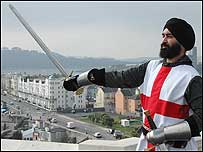 care (including apparently most of England), Saint George is the patron saint of England (sort of like Saint Patrick for the Irish) that:
care (including apparently most of England), Saint George is the patron saint of England (sort of like Saint Patrick for the Irish) that:
[Saint George] was a third-century Turkish soldier who supposedly had the power to slay a dragon but likely never set foot in Britain. [link]
Since he was probably Turkish to begin with, it seems like there should be no problem that Chaz Singh should be the Modern Day Saint George.
Modern Day St. George –> click here to watch BBC Video (love the British teeth!)
Chaz Singh is no newcomer to the media spotlight. He has been highlighted in a traveling picture exhibition as well as been commented upon by some popular desi blogs:
Chaz Singh is one of the recipients of the BBC Breeze bursaries that has enabled him to develop his ideas about identity in a series of photographic images and poems. [link]
Is Chaz SIngh trying too hard? Probably, but that he should even be accepted as such should be seen as a move towards cultural pluralism. Chaz Singh is attempting to make the turban very much English. No different than custard and roastbeef.
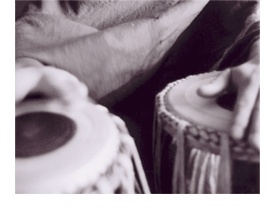 For those of you in the LA area planning on attending the Indian Film Festival of Los Angeles, be sure to check out some of the musical talent that will be highlighted throughout the week in conjunction with the festival. Gurpreet Chana, aka The Tabla Guy, will be performing…
For those of you in the LA area planning on attending the Indian Film Festival of Los Angeles, be sure to check out some of the musical talent that will be highlighted throughout the week in conjunction with the festival. Gurpreet Chana, aka The Tabla Guy, will be performing…
Tabla player Gurpreet has been taught in the Punjab Gharana (style) from his Ustad Ji Professor Parshotam Singh. He started by playing at the Gurdawara with kirtan and continues to do so. Gurpreet’s passion for percussion instruments has led him to experiment with other world beats and percussion instruments such as the djembe, congas, cajon, dhol, zarb and daf.
You can listen to some of his beats on his website and here’s a video of him performing during the Toronto Raptors halftime show:

Guest blogged by Mewa Singh
This evening I had the opportunity to view a screening of a new documentary on the tragedy and heroism of the Sodhi Family. From the website of “A Dream in Doubt” comes the synopsis:
“A Dream in Doubt” is an immigrant story in a world in which patriotism has morphed into murder. When Rana Singh Sodhi’s brother is killed in America’s first post-9/11 revenge murder, he begins a journey to reclaim his American dream and fight the hate that continues to threaten his community. This intimate, hour-long documentary of one man’s odyssey from persecution in India to embracing America as his homeland proves that courage and hope have the power to overcome hate.
Last month I attended PolicyLink‘s 2008 Regional Equity Conference in New Orleans. The conference covered poverty and racial inequality in the context of the U.S., but it focused on the connections between living spaces — i.e., between neighborhoods, cities, suburbs, and rural lands.
While cities were at the center of the discussion, I spent my last day at the Rural Equity Caucus, where representatives from some of the U.S.’s rural communities (Hawaii, Mississippi and Georgia, California, Connecticut and Massachusetts, North Dakota, Wyoming) gathered to discuss advocacy, development, and the common issues facing their communities. While the conference took place in the South, the overwhelming number of people in the room were from California’s Central Valley. There was some racial diversity among those present — a handful of African American farmers from the South, and a smattering of Latinos/Latino-Americans from California’s rural core, but there were almost no Asian Americans.
I was a little hesitant to post about this, especially considering the numerous discussions we’ve had on this blog related to the negative image of Sikhs in the media.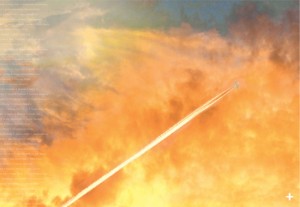 While a big fan of independent documentaries, I admittedly sighed when I came across an article about Air India 182, a film which was the opening feature at HotDocs, a film festival that was held in Toronto last weekend. My initial thought was that this was yet another way of perpetuating negative race relations in Canada.
While a big fan of independent documentaries, I admittedly sighed when I came across an article about Air India 182, a film which was the opening feature at HotDocs, a film festival that was held in Toronto last weekend. My initial thought was that this was yet another way of perpetuating negative race relations in Canada.
Air India 182, as it is simply titled, is a first-person account of the events leading up to the Air India tragedy and weaves together stories from those who are “directly involved,” including the families of those who died, investigators, and the “conspirators themselves.” Considering this, I didn’t expect to come across the director’s apt observations of how these events unfolded for the Punjabi community and what that meant for Sikhs in Canada,
Ultimately, Gunnarsson wanted to personalize the tragedy, to show the people involved, and give much more of a voice to the victims’ families, whom he believes didn’t get enough political recognition. “I felt at the time that people in Vancouver in the Punjabi community were being deprived of their rights as citizens of Canada. They did not have the same relationship to law enforcement or to political leadership as I did. It was being brokered through so-called community leaders, and the brokerage tended to happen at temples,” he says. [Link]
I like T-shirts. I am a self-described ‘scrub.’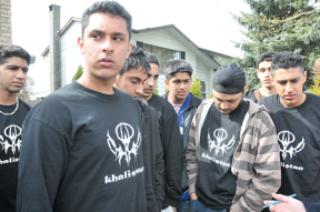
Someone who doesn’t care much about what they do or how they look doing it. Or if you just do something very very stupid.
((Girl walks into classroom for a class one day dressed in XXL sweatpants and a huge baggy sweatshirt, no makeup, hair looks nasty, but shes in perfect good health, just very lazy))
“Wow Anne, you are dressed like a scrub.”
T-shirts are my staple. For every season I have a Sikh camp/organization T-shirt. Need brown, I got it; need blue, I got it; need maroon, I got it. Did I mention I like T-shirts?
Apparently, so do a group of Sikh high school students in Surrey. Recently, the Canadian press reported here and here that:
Thirty students at Princess Margaret Secondary School say they’ve been put on suspension notice after wearing contentious T-shirts to class.
As I was exiting the parking lot of a major grocery store in a heavily concentrated Punjabi area the other day, I saw in my rear-view mirror a woman wearing a salwar-kaamez and holding a Bible with two Indian boys dressed in their “Sunday best” and carrying leather book bags, while they approached a man with a friendly smile. How surprised was I to see a Jehovah’s Witness woman wearing Punjabi clothing while she and these two boys proselytized in this Punjabi-concentrated area.
A few weeks prior, a friend of mine who lives in this same area, shared with me the story of how her family was confused to find a Punjabi couple at their front door delivering the message of God as Jehovah’s Witnesses. She told me that after hearing the door bell she ran to the door and peeped out the window and saw a man wearing a coat-pant and a woman wearing a salwar-kameez. Instantly, she knew they were Jehovah’s Witnesses because of the Bible they were holding and the other paraphernalia in their hands. My friend hollered to her dad that there was an Auntie and Uncle ringing the door-bell, but they looked like Jehovah’s Witnesses so she wasn’t going to answer the door. However, her dad responded rightfully so, “ekaan thaa teekh nahi laghdhaa … ladoo na dhaan ai hon” (that doesn’t look right they might be here to give ladoos).
So the weekend is upon us again. Yesterday, I had a friend tell me about an oh-so-common experience. His name is Harjinder [or something like that] and at work his co-workers asked if they could call him Harry. Something akin to when Barack went by Barry, back in the day. So Harry, ahem I mean Harjinder, stood his ground and insisted that his co-worker learn his real name. So on this Friday, I throw it out there, what are some of the names people have asked to call you?
Also for your viewing pleasure, here is a clip on the subject from one of the GREATEST programs ever: Goodness Gracious Me.

Today I announce the beginning of a new award. It is the ‘Stupidest Headline Featuring a Sikh-related Article.” My first nominee:
“A Temple That Aladdin Would Be Proud Of”
It seems that our friends down-under in Autralia, at the Shepparton News, were reporting the opening of a new Sikh Gurdwara. The article’s first paragraph continues with the obnoxiousness:
There will be no genie or magic lamp, but Harpal Singh described the finished product of Shepparton’s first Sikh temple as something similar to the palace of Agrabah in the Walt Disney animation Aladdin.
I doubt Harpal Singh said anything of the kind. [This assumption was faulty and the author of the article did clarify that Harpal Singh did in fact make the connection. Thank you Kayla!]
In 2008 can you really get away with being this dumb as a journalist?
Do you have any other nominations?
What moves you (both physically and emotionally)? Hip hop, the dhol, or Surinder Kaur? Artists, musicians and dancers often use their skill and art as a medium to promote their ideas.
The music of the Staple Singers soundtracked the civil rights movement: it was their songs that were sung on protest marches; Martin Luther King was a close friend of Pops Staples. “Pop, he always told the songwriters: if you wanna write for the Staples, read the headlines,” she says. “‘Cause we wanna sing about what’s happening in the world.
You’ve probably heard the classics “I’ll Take You There” and “Respect Yourself” by the Staple Singers…
The jazz writer Stanley Crouch once described the sound of the Staple Singers as “joy and thunder”. From the 50s, the family group, led by Roebuck “Pops” Staples, married a rumbling gospel with soul and blues and politics, creating hits such as I’ll Take You There and Respect Yourself.
Music has played a significant role in mobilizing social and political movements- from the Civil Rights movement in the U.S. to the anti-apartheid movement in South Africa by its power to move people emotionally and also to convey information .
We talk a lot about issues our community faces- what music motivates you to face those issues?
Do artists have a responsibility to engage with the issues of their day? Or do activists have a responsibility to make music about their ideas to connect with their audience?
Although my earlier discussion on multiculturalism put forth some of my thoughts, an interesting news item caught my interest yesterday. I guess this can be seen in a way as a part II of that original post.
While many of us spent our weekends remembering the spirit of the Khalsa, attending Nagar Kirtans, making rounds at the Vaisakhi Melas, or buying tickets for the upcoming Gurdas Mann tour, some New York Sikhs did something very different.
Sponsored by the Sikh Coalition, Sikhs in New York gathered at the steps of City Hall in protest. They released a report, “Making Our Voices Heard: A Civil Rights Agenda for New York City’s Sikhs.”
The report provides its own background:
In December 2006, the Sikh Coalition, with the help of several dedicated volunteers, began conducting the first ever civil rights survey of New York City’s Sikhs. The survey intended to gather information on Sikhs’ experiences with incidents of bias, employment discrimination, language access and other issues that hinder full integration into New York’s civic and political life.
This report represents the results obtained from the data we collected from 1,021 Sikhs who live in New York City’s five boroughs. The data presented in this report identifies significant gaps between the promise of the law and the Sikh community’s reality on the ground.
A Siropa signifies an honor bestowed on a individual for their commitment to Sikhi and their long-term dedication. Lately, however, I am witnessing the increasing distribution of Siropay being “gifted” out based on monetary contribution, or the completion of attendance to an event. Has the true essence of our Siropa tradition disappeared?
Amitabh Bachchan caused controversy last December when he was given Prashad at the Harmandar Sahib, which included a Siropa. This controversy touched upon the ongoing actions of our Gurdwaras of presenting a Siropa for all the wrong reasons. There was value in this tradition when Guru Angad granted Guru Amar Das an honor every year. Guru Amar Das treated these gifts as sacred, and carried them all tied on his head. So when I witness a wedding couple receive a Siropa at Fremont Gurdwara, simply for being married in front of the Guru Granth Sahib, I am confused. The couple was clearly a couple who was openly not interested in Sikhi, so I was disappointed to see this happen at a Gurdwara which draws such a large Sikh community in the Bay Area. This was not the first wedding to happen at this Gurdwara, but it was the first I had witnessed with the giving of Siropay. I wondered, how many Siropay are being given out here each month? I meant to ask the Giani Ji at the Gurdwara why the couple received this honor, but never got the chance. Is this something that is happening at other Gurdwaras?
We are losing the value of this tradition if we continue to “gift” these articles of honor. What will be the difference between a person who has been practicing Sikhi with a true heart their whole life, and a person who plays a Sikh in a Bollywood movie? What will be the difference between a person who has awoken at Amrit Vela every morning to do their Paath for the past 40 years, and a person who attended the Gurdwara and donated a large sum of money?
Whose responsibility is it to decide who deserves a Siropa ? It seems to me that our Gurus left us with these traditions so we could follow them, then why are we making our own rules? As a Sangat should we be adding value to the decisions our Gurdwaras are making?
In one of the rare years in which Vaisakhi falls on April 14th, I wanted to wish everyone a happy Vaisakhi! How did you/your family celebrate? Personally, I totally forgot until reminded by Ms. Phulkari, at which point I coerced my roommate into imitating a dhol while we both danced around. Having settled the cultural side of the day, I’m looking forward to next Sunday’s services.
Hope today found you in good health, and here’s to a fantastic new year!
While Fortune Magazine used this picture in a recent advertisement for Dow Chemical Company, I first saw this image on the premiere issue of a new magazine I subscribe to. 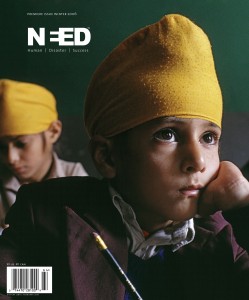 The image, by world-renowned photographer Steve McCurry, was chosen for the cover of the first issue of NEED magazine, an independent publication dedicated solely to global and domestic humanitarian issues.
The image, by world-renowned photographer Steve McCurry, was chosen for the cover of the first issue of NEED magazine, an independent publication dedicated solely to global and domestic humanitarian issues.
Steve McCurry is founder of ImagineAsia – an organization that helps children in rural Asian communities by addressing fundamental education and healthcare needs. The image, displaying Sikh children, was used to display (among other images) the pictorial state of education in Afghanistan. The education system in Afghanistan was virtually destroyed following successive wars and oppression by the Soviet Union and the Taliban. McCurry has been covering Afghanistan since before the Russian invasion in 1979. He has a unique and intimate knowledge of the country. He saw first-hand the turmoil of war and an entire generation of Afghans lose an opportunity to be educated. The result is a shattered country that ranks among the most illiterate in the world. [NEED Magazine]
Afghanistan’s children represent the country’s hopes for a better future, and education is the key to that future. The country’s new constitution makes education mandatory for children up to grade nine. This is a unique window of opportunity in Afghanistan’s history, a time when the need for education has been recognized and children are yearning to go to school. – Steve McCurry, Winter 2006 issue, NEED magazine.
You can order this issue (Winter 2006) of NEED magazine by viewing this website.
Desi Southpark to send you off to the weekend. For those of you easily offended…..dun vurry, he only joking you know, only joking yaar.

Recently, the Ontario Khalsa Darbar and the Punjabi Daily newspaper in Mississauga participated in Earth Hour to highlight the issue of climate change.
The Punjabi Daily newspaper from Mississauga has been urging its readers and Sikh
organizations to participate in EARTH HOUR. The Ontario Khalsa Darbar (Dixie Rd. Gurdwara Sahib-Sikh Place of Worship) has prepared for Earth Hour on March 29, a worldwide initiative launched by the WWF, the global conservation organization. It will be lights-off between 8 and 9 p.m. at the Gurdwara, where the hundreds gathered in the congregation will unite and use candles to pray for a cleaner and more peaceful world. “The Sikh Community has always taken a leadership role in protecting our environment. We are proud to participate in Earth Hour, which shows the Sikh communities commitment to protecting the environment, I encourage everyone to join in and turn off their lights for that one hour,” said Sukhminder Singh Hansra, of The Punjabi Daily, a Punjabi newspaper in Mississauga who urged the Sikh community join in using it’s editorials.
Earth Hour was a symbolic gesture to bring attention to the wastage of electricity and climate change. Though climate change is now almost universally accepted as a reality, its effects are often unclear. Some groups that had very little to do with contributing to its causes are already feeling the effects. Meet global warming’s first refugees (according to Sugata Hazra, the director of the School of Oceanography Studies at Kolkata’s Jadavpur University) in the Sundarbans:
This week the National Post launched a series about “Canada’s Biggest Mistakes.” Written by different columnists, yesterday’s big mistake was deficit spending. In today’s installment of the “top 5,” columnist Barbara Kay sets her sights on multiculturalism.
today’s installment of the “top 5,” columnist Barbara Kay sets her sights on multiculturalism.
I must admit I am not an avid reader of the National Post. In fact, I don’t think I had ever even heard of it prior to this column. However, Wikipedia informs me that it is a “voice for Canadian conservatives.” A brief perusal of Kay’s biggest hits, including as “Hug the Earth, kill the humans, ” “Barack Obama’s selective silence on his racist pastor, Jeremiah Wright,” and “The College Campus: Anti-Semitism’s last North American Refuge and Taking Back the Campus” helps me situate her on a political spectrum. In America, we call her David Horowitz and Bill O’Reilly. Well, enough of that, let us try to engage the substance of her argument.
Kay doesn’t mince her words on her stand:
Multiculturalism is Canada’s greatest mistake, but if it is any consolation, it is every western country’s greatest mistake. And now some of them are paying a terrible price.


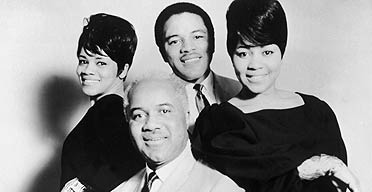 The music of the Staple Singers soundtracked the civil rights movement: it was their songs that were sung on protest marches; Martin Luther King was a close friend of Pops Staples. “Pop, he always told the songwriters: if you wanna write for the Staples, read the headlines,” she says. “‘Cause we wanna sing about what’s happening in the world.
The music of the Staple Singers soundtracked the civil rights movement: it was their songs that were sung on protest marches; Martin Luther King was a close friend of Pops Staples. “Pop, he always told the songwriters: if you wanna write for the Staples, read the headlines,” she says. “‘Cause we wanna sing about what’s happening in the world.